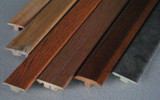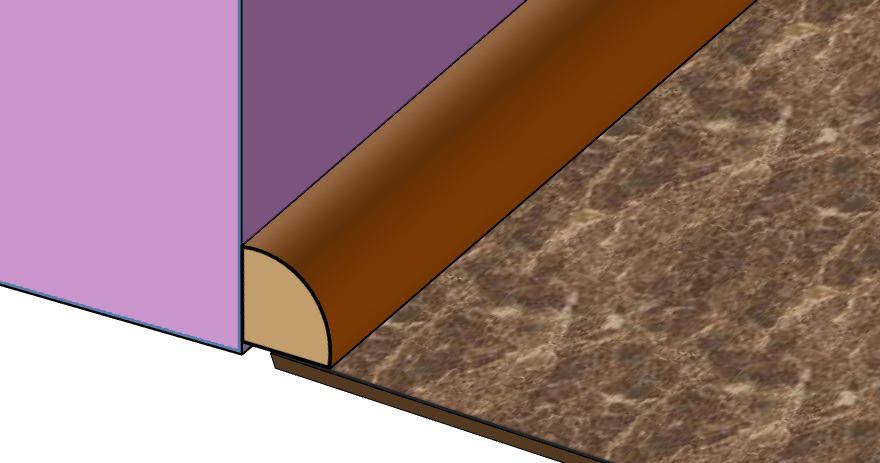Does Your New Floor Need Accessories?

What a long, strange trip it’s been: you’ve done your research, decided on a material, set your heart on a color, and then, oh, and then…you bought It. Your perfect floor, from Floors To Your Home, of course!
But wait. There’s more.
Think of it like buying the perfect outfit: the clothes are important, but what about the finishing touches? Just like that great new ensemble needs the perfect pair of earrings, your new floor might need some accessories.
What Kind of Accessories Are Available For Flooring?
The most common accessories that may be needed for a successful flooring project are trim and underlayment. These are two fairly broad categories; both include a wide variety of options designed to suit a project’s individual needs.
What’s the Difference Between Trim & Molding?
Although there’s some debate about what exactly the difference is between trim and molding, the general consensus is that trim is there to be practical, molding is there to be pretty. Trim is used as a universal term for everything from baseboards to crown molding, but it does serve a very practical purpose alongside its aesthetic value. Trim is often used to hide joints, expansion gaps, seams, and other surface imperfections.
Types of molding vary depending on where the molding is going to go. For example, crown molding is a decorative transition piece between a wall and a ceiling. Conversely, a baseboard is a decorative transition piece between a wall and a ceiling.
What are the Different Types of Trim?
Quarter Rounds live up to their name! A cross-section of a quarter round looks like ¼ of a pie chart, 25%, or, you guessed it: one quarter of the whole.

Designed to disguise expansion gaps, quarter rounds are sold finished or unfinished and can be customized to match your floor. Read more about quarter rounds here.
T-Molding is shaped like the terrific, towering, and transformative twentieth letter of our alphabet, drum roll please…
T-molding serves as a transition between two level hard surfaces, usually from room to room or between a room and a hallway. In addition to providing a smooth transition between rooms, t-molding also gives room for the floors to expand and contract.
 Read more about T-molds here.
Read more about T-molds here.
End Caps indicate a floor’s definitive end. They’re used wherever a floor meets with anything vertical other than a wall, such as fireplaces or sliding door tracks, or a higher surface such as a high carpet or a very thick tile. It is also used to border off where the floor ends, such as at a doorway. Read more about end caps here.
Reducers are a more subtle type of end cap and are designed to remove gaps between different-leveled floors. Instead of taking that sharp 90 degree drop like an end cap, a reducer tapers off at a gentle angle to provide a smooth transition.
 Read more about them reducers here.
Read more about them reducers here.
Thresholds are used when two floors with different heights meet. For example, a threshold would be great between a laminate floor and a plush carpet. Read more about thresholds here.
Underlayment
Underlayment is a term used for the padding placed above your subfloor and underneath your flooring material. It protects against moisture, absorbs sound, and decreases subfloor imperfections. Some floors feature pre-attached pad. Read more about the different types of underlayment here.
Do you have questions about what accessories might be right for your floor? Call 1-800-804-5251 or click on FloorsToYourHome.com to chat with our flooring experts!
- - - -
Meredith is a content writer at Floors To Your Home. Away from the office she's a published author, hockey fan, music lover, and mom to a vampire-fanged rescue cat.
Follow Team Floors To Your Home on Pinterest

Follow Team Floors To Your Home on Facebook

 Brown Tone
Brown Tone
 Unfinished
Unfinished
 Red Tone
Red Tone
 Golden Tone
Golden Tone
 Gray Tone
Gray Tone
 Light Tone
Light Tone
 Medium Tone
Medium Tone
 Dark Tone
Dark Tone
 Brown Tone
Brown Tone
 Red Tone
Red Tone
 Golden Tone
Golden Tone
 Gray Tone
Gray Tone
 Light Tone
Light Tone
 Medium Tone
Medium Tone
 Dark Tone
Dark Tone
 Brown Tone
Brown Tone
 Red Tone
Red Tone
 Golden Tone
Golden Tone
 Gray Tone
Gray Tone
 Light Tone
Light Tone
 Medium Tone
Medium Tone
 Dark Tone
Dark Tone
 Multi Color
Multi Color
